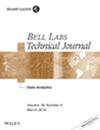一种混合方法的讽刺检测
Q1 Engineering
引用次数: 0
摘要
由于互联网和社交媒体用户的增加,用户生成的文本数据过度增长,其中包括大量的讽刺词、表情符号和句子。讽刺是一种微妙的交流形式,个人为了侮辱某人、表达愤怒或搞笑而表达与所暗示的相反的意思。讽刺是情感分析中最困难的问题之一,因为它具有歧义性。识别文本中的讽刺可以促进许多情感分析和文本摘要的应用。因此,为了解决讽刺问题,人们采取了许多步骤来进行讽刺检测。不同的预处理技术,如超文本标记语言去除,停止词去除等已经完成。同样,将表情符号和笑脸符号转换成相应的文字也已经完成。选择了最常见的特征,混合级联和混合加权平均方法是随机森林,naïve贝叶斯和支持向量机算法的组合,用于讽刺检测。在不同的基础上对这两种方法进行了比较,结果表明级联法优于加权法。此外,在算法放置方面也进行了级联方法的比较,其中随机森林被证明是最好的。本文章由计算机程序翻译,如有差异,请以英文原文为准。
A Hybrid Approach for Sarcasm Detection
There is an excessive growth in user generated textual data due to increment in internet and social media users which includes enormous amount of sarcastic words, emoji, sentences. Sarcasm is a nuanced form of communication where individual states opposite of what is implied which is done in order to insult someone, to show irritation, or to be funny. Sarcasm is considered as one of the most difficult problems in sentiment analysis due to its ambiguous nature. Recognizing sarcasm in the texts can promote many sentiment analysis and text summarization applications. So for addressing the problem of sarcasm many steps have been adopted for sarcasm detection. Different preprocessing techniques such as Hypertext markup language removal, stop words removal, etc. have been done. Similarly, conversion of the emoji and smileys into their textual equivalent has been performed. Most frequent features has been selected and a hybrid cascade and hybrid weighted average approaches which are the combinations of the algorithms random forest, naïve Bayes and support vector machine have been used for sarcasm detection. The comparison of these two approaches on different basis has been done which has shown cascade outperformed weighted approach. Moreover, comparison of cascade approaches in terms of the algorithm placement has also been performed in which random forest has proved to be the best.
求助全文
通过发布文献求助,成功后即可免费获取论文全文。
去求助
来源期刊

Bell Labs Technical Journal
工程技术-电信学
自引率
0.00%
发文量
0
审稿时长
6-12 weeks
期刊介绍:
The Bell Labs Technical Journal (BLTJ) highlights key research and development activities across Alcatel-Lucent — within Bell Labs, within the company’s CTO organizations, and in cross-functional projects and initiatives. It publishes papers and letters by Alcatel-Lucent researchers, scientists, and engineers and co-authors affiliated with universities, government and corporate research labs, and customer companies. Its aim is to promote progress in communications fields worldwide; Bell Labs innovations enable Alcatel-Lucent to deliver leading products, solutions, and services that meet customers’ mission critical needs.
 求助内容:
求助内容: 应助结果提醒方式:
应助结果提醒方式:


